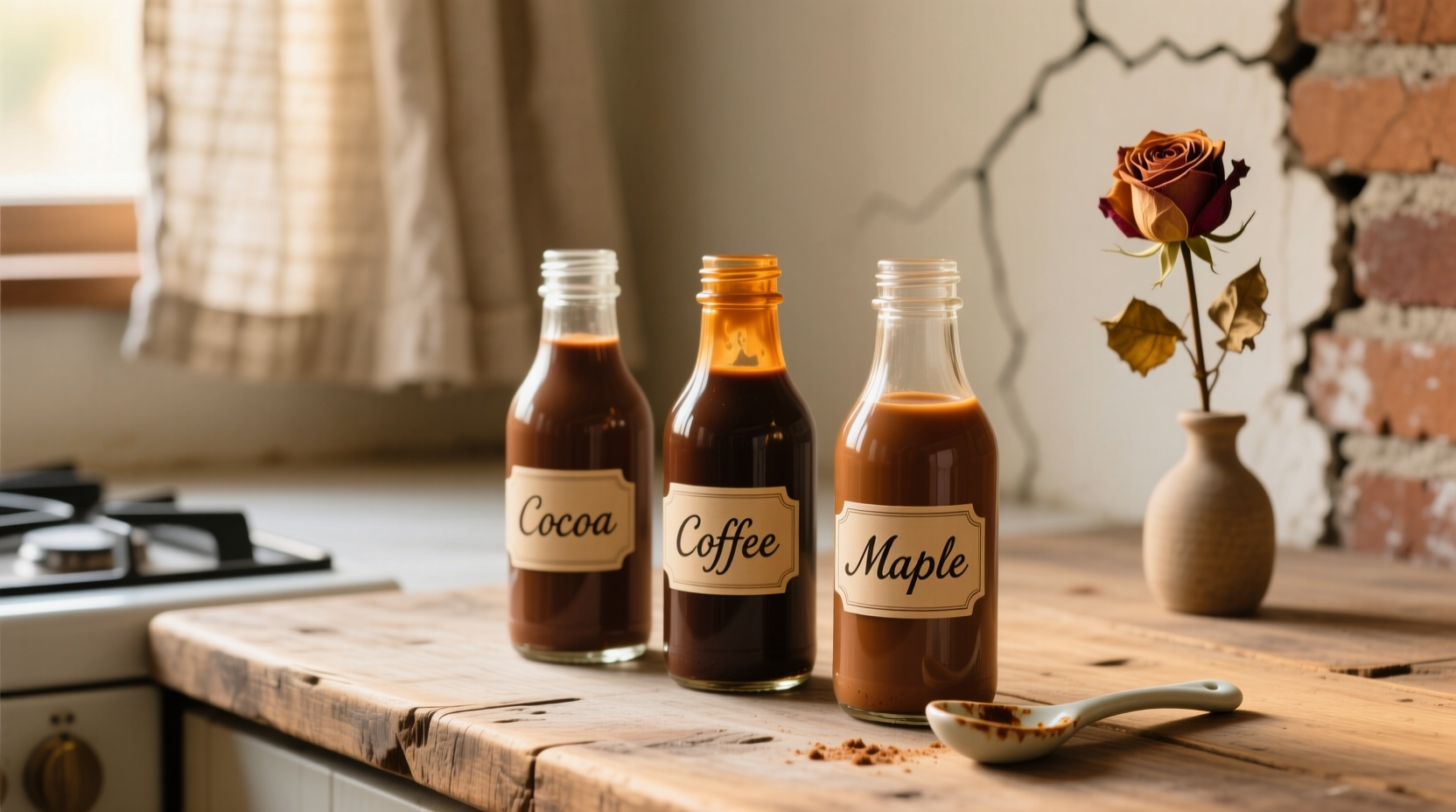Creating brown food coloring at home is simpler than most home bakers realize. Unlike primary colors, brown requires strategic blending of natural ingredients that already contain earthy pigments. Professional chefs and food scientists confirm that coffee, cocoa, and certain spice combinations produce the most stable, food-safe brown hues without altering flavor profiles significantly.
Why Brown Is Different From Standard Food Coloring
Brown isn't a primary color in the culinary spectrum—it's a composite shade requiring careful balancing. According to the USDA Food Safety and Inspection Service, natural colorants derived from food sources are generally recognized as safe (GRAS) when used appropriately in home cooking applications.
| Color Method | Best For | Color Stability | Flavor Impact |
|---|---|---|---|
| Coffee concentrate | Chocolate cakes, cookies | High (resists baking) | Mild coffee notes |
| Cocoa powder solution | Frostings, fillings | Moderate | Distinct chocolate flavor |
| Coffee + cocoa blend | All baking applications | Very high | Balanced flavor |
| Spice mixture | Non-sweet applications | Low (heat-sensitive) | Noticeable spice notes |
Coffee-Based Brown Coloring (Best for Baking)
This method produces a rich, stable brown ideal for baked goods. Strong brewed coffee contains melanoidins—complex polymers formed during roasting that provide excellent color stability during baking.
What you'll need:
- 1 cup freshly brewed strong coffee (cooled)
- 2 tablespoons instant coffee granules
- Fine mesh strainer
- Small saucepan
Step-by-step process:
- Brew coffee using 2 tablespoons extra grounds for stronger concentration
- Dissolve instant coffee granules in warm brewed coffee
- Simmer mixture uncovered for 15-20 minutes until reduced by half
- Cool completely before using (color deepens as it cools)
- Store in airtight container in refrigerator for up to 2 weeks
Use 1-2 teaspoons per cup of batter for light brown, up to 1 tablespoon for dark chocolate tones. This method works particularly well for chocolate cakes where slight coffee notes enhance flavor.

Cocoa Powder Solution (Ideal for Frostings)
When you need brown coloring without coffee flavor, pure cocoa offers a reliable alternative. Research from the USDA National Agricultural Library shows that cocoa's polyphenol content creates stable color compounds that maintain integrity in cold applications.
Perfect ratio for frosting:
- 3 tablespoons unsweetened cocoa powder
- 2 tablespoons hot water or milk
- 1 teaspoon clear corn syrup (optional, for shine)
Mix ingredients until completely smooth. For darker shades, increase cocoa incrementally. This solution works best in buttercream and cream cheese frostings where the chocolate flavor complements the overall taste profile.
Combination Approach for Professional Results
Professional pastry chefs often combine coffee and cocoa for the most versatile brown coloring. This method balances flavor neutrality with color intensity:
- Mix 2 parts coffee concentrate to 1 part cocoa solution
- Add to batter or frosting gradually until desired shade achieved
- Remember: color deepens slightly during baking
This hybrid method provides the stability of coffee with the rich hue of cocoa, creating a brown that works across most baking applications without overwhelming flavor notes.
Spice-Based Alternative (For Savory Applications)
When coffee or cocoa isn't appropriate (like in gingerbread or spice cakes), a spice mixture offers an alternative. Note that this method works best in recipes where spice flavors complement the final product:
- 1 teaspoon paprika
- ¼ teaspoon turmeric
- 2 tablespoons warm water
Mix spices with water to form a paste. This creates a warm brown tone ideal for gingerbread, spice cakes, or savory applications. The CDC Food Safety guidelines recommend using only food-grade spices from reputable sources for coloring purposes.
Troubleshooting Common Issues
Brown too light? Reduce liquid content by simmering longer or increase coloring agent concentration. Remember that baked goods typically appear lighter when cooled.
Brown too dark? Dilute with small amounts of your base liquid (milk, water, or clear syrup) until desired shade achieved.
Unwanted flavor? Coffee-based colors work best in chocolate applications. For neutral flavor, try the spice method in appropriate recipes or reduce concentration.
Storage Guidelines
Store homemade brown coloring in airtight glass containers in the refrigerator:
- Coffee-based: Up to 2 weeks
- Cocoa-based: Up to 1 week
- Spice-based: Up to 3 days
Discard if mold appears, smell changes, or separation cannot be remedied with gentle shaking. Freezing in ice cube trays extends shelf life to 3 months.
Frequently Asked Questions
Can I make brown food coloring without coffee or cocoa?
Yes, you can create brown using a mixture of paprika and turmeric dissolved in warm water. This works best in spice-forward recipes like gingerbread where the additional flavors complement the final product.
How much homemade brown coloring should I use per cup of batter?
Start with 1-2 teaspoons for light brown and increase to 1 tablespoon for dark chocolate tones. Add gradually and test color by baking a small sample, as shades deepen during baking.
Does homemade brown food coloring affect baking time?
No, when used in recommended amounts (1-2 tablespoons per cup of batter), homemade brown coloring doesn't significantly alter moisture content or baking time. Always follow your recipe's baking instructions and test for doneness as usual.
Why does my homemade brown coloring separate?
Separation occurs when particles aren't fully dissolved. Always strain coffee concentrates and ensure cocoa is completely mixed with hot liquid. Adding ½ teaspoon clear corn syrup helps stabilize the mixture and prevents separation in frostings.











 浙公网安备
33010002000092号
浙公网安备
33010002000092号 浙B2-20120091-4
浙B2-20120091-4